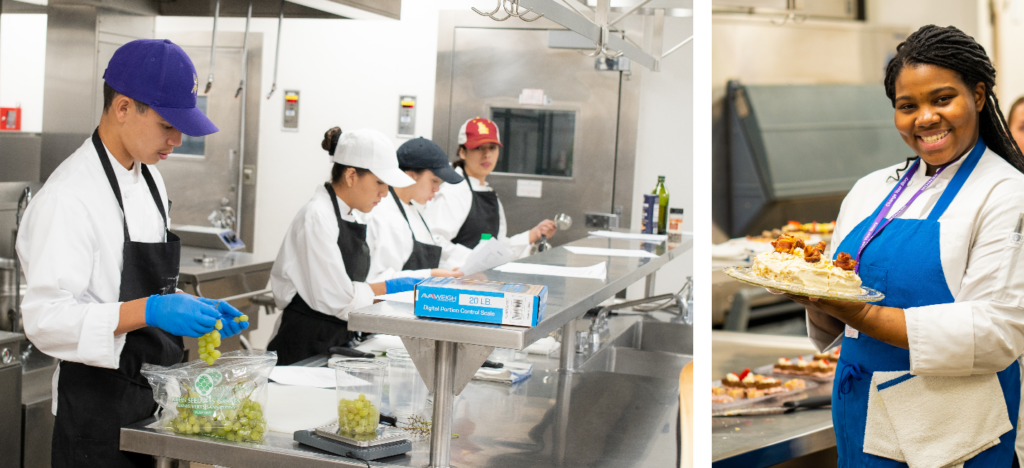
The number one problem is a decline in foodservice workers. Seven out of 10 operators report not having enough employees to support demand at their restaurants. Not only did COVID-19 change workers’ perspectives and interest in foodservice, but there has been a steady decline in the labor force in recent years. Since 2000, there are nearly two million fewer 16-to-34-year-olds in the labor force, which is a problem since this age cohort makes up nearly two-thirds of the restaurant industry workforce.
National Culinary Arts Month helps us appreciate the hardworking and creative chefs and restaurant workers while raising awareness of the challenges employers face. One solution to the employee shortage is for more high schools to offer culinary CTE (career technical education) pathways.
Many of our schools offer a robust culinary program in which students earn ServSafe and CPR certifications. They then begin a 32-week program that starts with food safety standards and culinary fundamentals, like knife skills and cooking methods for savory foods. They poach, braise, sauté, learn to cut up a chicken, and master soups and sauces. Students meet weekly in the school’s industrial kitchen for a five-hour session, plus additional labs and tutorials.
One of the courses focuses on the business side of running a restaurant. Students learn how to do front-of-the-house management, cost analysis, budgeting, profit margins and customer service. Another class teaches future baristas the nuances of a perfect cup of coffee, espresso, latte and more – all while they complete their coursework to graduate high school.
Camryn F., 19, a 2020 graduate, completed the culinary arts program and is planning to open her own cupcake company, N.O. Cakes. “I always loved baking and knew I wanted to have my own business,” she said. “In culinary class, I learned how to make all types of bread and baked goods I had never tried before. It really broadened my horizons in baking.”
Camryn learned about the science of cooking and ingredients, and how critical that is in baking. She’s busy finalizing recipes, putting together a business plan and website, and hopes to open N.O. Cakes by the end of the year.
The good news for culinary students is the job outlook. Employment of food and beverage serving and related workers is projected to grow 17 percent from 2020 to 2030. This is much faster than the average for all occupations, and wages are on the rise.

